How on earth do you grow Maogu mandarin?
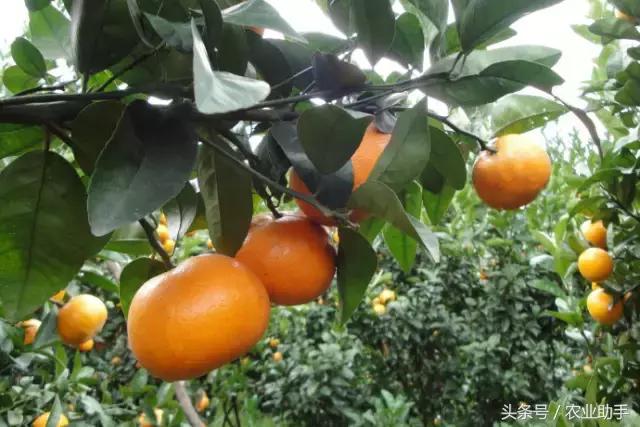
Maogu mandarin is a late-ripening citrus, which originated from Miami Agricultural Laboratory in Florida, USA. It was bred by the cross between wide-skinned citrus and sweet orange. It was introduced to Taiwan from the United States in the 1970s and to the mainland from Taiwan in the 1990s.
Due to the good quality, beautiful appearance, good delivery period and convenient consumption, Maogu mandarin is loved by the majority of consumers. In recent years, the price has been relatively strong, and the planting area has been expanding.
Know Maogu mandarin
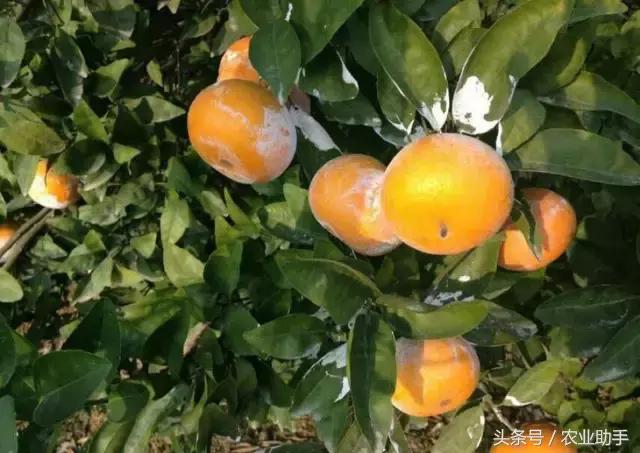
Variety characteristics
Morphological characteristics: Maogu citrus is a small evergreen tree with clumpy branches, smooth and grayish brown trunk, erect and sturdy branches. The leaves are broadly lanceolate, the Corolla is long oval and white, the fruit is oblate, and the seeds are small, flat and pointed.
Phenological phase: Maogu mandarin shoots three times a year, that is, spring, summer and autumn shoots, the largest amount of spring shoots, accounting for 70% of 80%, its germination period is February, mid-late June, late August, the results of the mother branch is mainly spring shoots. The budding stage is in the middle to late March, the initial flowering stage is in the middle of March, and the flowering stage is in late March. The types of flowers are leafless single flower, leafless inflorescence and leafless inflorescence. The fruit began to change color in early November and matured from February to March the following year.
Fruiting habit: the length of fruiting mother branch was better in 10~15cm, mainly in spring shoot, and the fruit setting rate of leafy flowers was higher than that of leafless flowers. The first peak of physiological fruit drop was from March to early April, the second peak was from April to late June, and the fruit expansion period was from May to December.
Fruit characters: the fruit often grows at the top of the branch, the pericarp is thin and bright orange, and the fruit is neatly shaped; the fruit is solid, oblate, the base and top of the fruit are flat, and the single fruit weighs 150-300g; the content of soluble solids can reach 17.0%, the acidity is 0.6-1.0%, and the flavor is rich and refreshing.
Main advantages
Early bearing and high yield: the fruit can be hung in the second year after planting, the yield per mu can reach 1500-2000 kg in the third year, and enter the high-yield period after the fourth year. The highest yield per mu with high management level can reach 2600 kg.
Strong affinity: grafted with Fructus Aurantii, mandarin, sour orange, lemon, red orange and Zhiyang orange as rootstocks, all showed strong affinity and good growth and development.
Strong cold resistance: Maogu citrus has strong cold resistance. Through the planting experiment, the local low temperature of the planting site is-3 ℃, and the crown of Maogu mandarin is not affected.
Late-maturing varieties: the mature period is from February to March every year, which can stagger the time of a large number of citrus on the market, and coincide with the festive season, so the solid income is better.
Some deficiencies
① Maogu mandarin has more upright branches, more fruits born at the top, and the peel is closely connected with the pulp, so the fruit sunburn disease occurs more seriously, especially in young trees.
The pericarp of ② Maogu citrus is thin and close to the pulp, which is easy to crack, especially in the period of fruit expansion, when there is heavy rain or uneven water supply after a long drought, the occurrence of fruit cracking increases obviously.
③ Maogu mandarin mainly uses Fructus Aurantii as rootstock, which is characterized by moderate growth, early bearing and high yield, good cold and drought resistance and easy to manage. However, after 3-4 years of full fruit period, premature senescence is easy to occur, resulting in low yield and poor quality.
Brief introduction of cultivation techniques of Maogu mandarin
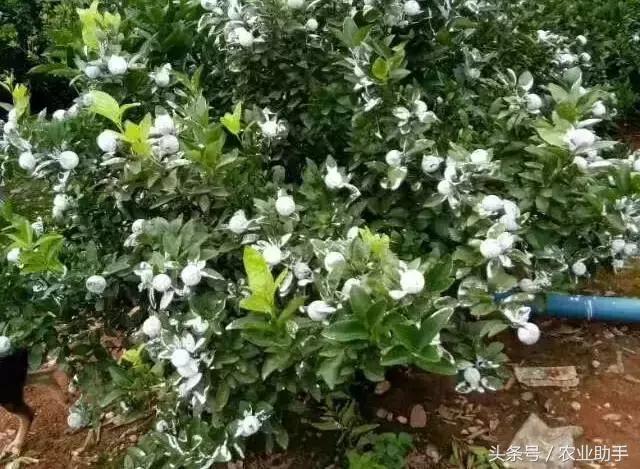
Choose a site to build a garden
Maogu mandarin has a wide adaptability, with an annual average temperature of more than 20 ℃ and annual rainfall of more than 1700mm. Cultivation in mountainous and flat land can generally bear early and high yield, and the area with extremely low temperature above 0 ℃ is the best.
The plots with loose, fertile, good drainage and irrigation, pH between 5.5 and 6.5, leeward and sunny were selected as garden plots. Before planting, dig the planting hole, the depth is 0.6m, the width is 0.8m, and apply sufficient base fertilizer. The excavated surface soil and the bottom soil should be stacked separately, that is, the mature soil with 30cm thickness on the surface layer should be placed on one side of the cave, and the raw soil with 50cm thickness in the lower layer should be placed on the other side.
After digging the planting hole, first put the topsoil into the bottom layer, and then put the soil miscellaneous fertilizer or weed green manure 35kg, pig and cattle fertilizer 20kg, phosphate fertilizer 1kg, potassium fertilizer 0.25 kg, lime 0.5kg and so on into the bottom layer of the hole after mixing well with the soil, fill to the bottom of the hole, fill it to the depth of 1x2x3, and finally form a colonization hole; the planting hole should be higher 15~20cm than the original soil surface, so as to prevent the seedling marriage interface from being buried when fertilizer and loose soil sinking, causing root and neck rot.
Colonization
The row spacing of 3.0m × 2.0m or 2.5m × 2.0m was planted before sprouting in spring and about 15 days after the Beginning of Spring, when the root had already begun to move, the survival rate was high, and the areas with good irrigation could also be planted in autumn.
When raising seedlings, pay attention to wrapping the roots with yellow soil slurry to protect the roots. Good varieties and strong seedlings with well-developed roots should be selected when planting. After planting, when covering the soil to 80%, gently lift the seedling up to make the soil into the root gap, then step on it with your feet around the seedling, and then cover the soil to the root neck to make a disc-shaped tree plate.
Young tree management
Water management: within 1 month after planting, the seedlings of Maogu mandarin were drenched once every 3 to 4 days, and could survive after half a month. After the new shoots germinate, they should be watered every 10-15 days to keep the soil moist. Drain water in time after rain to prevent rotting roots.
Tree plate cover: seedlings should be covered with weeds or straw to reduce water evaporation, keep the soil loose and moist, promote new roots and improve the survival rate of seedlings.
Increase the application of nitrogen fertilizer: about one month after planting, the seedlings have basically survived, and 500 times of the sea elves biological stimulant (root application type) can be applied at this time, or thin dung water + 0.2-0.5% urea, and then each time before the new shoot germination and before the branch mature, the attack shoot and strong shoot fertilizer are applied respectively, and the fertilizer is mainly high nitrogen compound fertilizer.
The young tree stage of Maogu mandarin is mainly vegetative growth, and it is appropriate to apply fertilizer frequently and thinly, that is, a small amount of fertilizer for many times and low concentration. Generally, for 1 ~ 2-year-old young trees, the average nitrogen application per tree is 0.2~0.3kg, which is equivalent to urea 0.4~0.6kg.
The surviving young trees can apply fresh water fertilizer for the first time after the new shoots germinate, and then once every half a month. The best fertilizer is rotten human manure or bran cake fertilizer. At the beginning, the amount and concentration of manure or bran fertilizer per 5~7kg plant should gradually increase with the growth of seedlings.
Cultivation of tree crown: wiping and shaping, cultivation of ventilated and transparent crown with reasonable distribution of branches is the key to stable tree potential, high quality and high yield. Generally strong branches leave only 3 or 4 shoots, and ordinary branches leave 2 or 3 strong buds in different directions. Shoot 3-4 batches every year to gradually form a compact and robust crown.
Management of result tree
Fertilizer and water management: general fruiting trees set more fruit, basically do not grow autumn shoots, fruiting mother branches are mainly spring shoots. Maogu citrus has many flowers, easy to set fruit, high yield and high solid content, so it is necessary to do a good job of "postharvest re-application", that is, after the fruit is harvested in late February, the trenches with wide 40cm and deep 60cm are dug along the dripping line of one and four canopies, and each plant is applied with organic fertilizer 25kg, compound fertilizer 5kg, and trace element fertilizer according to the actual situation, gently loosen the soil and turn the fertilizer under the surface soil.
"Summer potassium" refers to the application of stable fruit fertilizer in the first ten days of May before physiological fruit drop, which is mainly composed of high potassium compound fertilizer and water fertilizer containing humic acid and seaweed extract. The foliar can be sprayed with 800-fold solution of sea elf biological stimulant (foliar type), or 800-fold solution of phosphorus and potassium source pool + medium and trace element water-soluble fertilizer.
"Autumn compound" is the application of 3~4kg compound fertilizer to the plant before the autumn shoot in the middle of July. "irrigating and irrigating fertilizer" means that the sea elves biological stimulant (root application type) was sprayed with 300x solution every month from July to the first ten days of December, and the plant was treated with 25kg. The foliar surface was sprayed with 800-fold solution of phosphorus and potassium source pool, boron fertilizer and water-soluble fertilizer of medium and trace elements every 2 months. In addition, the application of too much potash fertilizer will thicken and thicken the pericarp of Maogu mandarin, so we should pay attention to control the dosage when using it.
Smart recommendation:
Sea elf biological stimulant stimulates wild crops with hormone-free 30ml*25 package Function () {if (! window.__TEMAI_PARSED) {if (window.responsivepurchase) {if () {window.responsive.responsivepurchase. ChangeScale (1) "app") {var e = "% 3Cscript%20src=%22 https://s3.pstatp.com/inapp/toutiao.js%22%3E%3C/script%3E";" Document.write (decodeURI (e))} var t=document.createElement ("script"); t.src = "https://s2.pstatp.com/pgc/v2/pgc_tpl/pagelet/card/click_ccce36d.js",document.body.appendChild(t)}}();"
Shaping and pruning: in the period of putting into production, the fruiting mother branch of Maogu mandarin is mainly spring shoot, that is, when the spring shoot grows to 5cm, there are 2 or 3 strong buds in different directions on each shoot; the principle of leaving buds is: sparse and sparse, short and long, weak and strong, and excessively vigorous branches with 6 leaves and 7 leaves to pick the heart.
Wipe off all summer shoots, before autumn shoots (early and middle July), wipe off scattered buds, short shoots, the truncated position should not be too high or too low, preferably between sections 6 ~ 7.
Autumn shoots are put in late July, if the trees are weak or the tree shape is not compact, a small amount of late autumn shoots can be left depending on the situation, and the rest and winter shoots will be erased. Pruning in time after fruit harvest, on the basis of ventilation and light, reasonable distribution of branches, compact crown, cut off cross branches, shade branches, long branches, disease and insect branches, weak branches and withered branches, burn them and clear the garden at the same time.
Flower and fruit management
Flower thinning and fruit thinning: because of the large amount of flowers and high fruit setting rate of Maogu citrus, in order to reduce the consumption of tree nutrients, artificial flower thinning should be adopted during the flowering period of fruiting trees, that is, shaking the trunk or main branches to accelerate the shedding of the whole flower organs and reduce the amount of flowers.
Artificial fruit thinning was carried out twice. The first time, after the first peak of physiological fruit drop, mainly removed the diseases and insect pests and abnormal fruits, and the second time, after the second physiological fruit drop, the fruit thinning was carried out according to the leaf-fruit ratio of citrus varieties, taking the leaf-fruit ratio of Wenzhou mandarin at 25: 35 ∶ 1 as a reference, from late June to early July.
Sunburn prevention: the fruiting part of Maogu mandarin is mostly at the top of the branches, which is easy to cause sunburn scars, especially in young trees. The common prevention method is to apply white paper, bagging or white coating on the sunny part when the transverse diameter of the fruit is large enough to 4cm, and the latter is the most common.
Self-made whitening agent: light calcium carbonate + glue + water, dilution ratio is 10 ∶ 6 ∶ 1, mix light calcium carbonate in proportion, consistency is beneficial to smear, then apply light calcium carbonate evenly on the pericarp with a brush.
Note: ① do not use calcium oxide; ② does not recommend spraying the whole tree, which will affect photosynthesis and flower bud differentiation; ③ calcium supplement may not necessarily prevent sunburn, but years of practice has proved that calcium supplement can effectively reduce sunburn of Maogu mandarin.
Anti-cracking fruit: Maogu citrus peel is very thin, easy to crack fruit, especially after a period of drought suddenly heavy rain, the fruit is more likely to crack during the expansion period. Therefore, covering rice straw, bagasse or other organic fiber under the canopy during the fruit expansion period (May to December) and conditional mulching with plastic film or drip irrigation are effective measures to prevent cracking. In the period of fruit expansion, calcium should be supplemented to reduce fruit cracking, combined with the application of sea elves biological stimulant, the sugar content and quality of fruit can be improved.
Pest control
The main diseases and insect pests of Maogu mandarin include anthracnose, canker, resin disease, thrips, planthoppers, red spiders, fruit-sucking armyworm and so on. According to the law of the occurrence of diseases and insect pests, timely symptomatic spray control, at the same time grasp the concentration of various pesticides and matters needing attention to ensure good efficacy without causing drug damage. The specific prevention and control plan can refer to the previous articles of the platform.
This article is compiled and organized by the agricultural assistant team. Please indicate the source of the agricultural assistant when reprinting. Please do not modify the content of the article when reprinting.
references
"High quality and High yield cultivation techniques of Maogu Citrus" Chen Jingshan
A study on the present situation and Countermeasures of the Development of Maogu Orange in Guangxi Wang Bo
"Biological characteristics of Maogu mandarin and preventive measures against sunburn and fruit cracking" Chen Binyan
"causes and Countermeasures of premature Senescence of Maogu Citrus" Fang Jinchuan
"Maogu Citrus whitening Technology" Copper Sulfate
- Prev
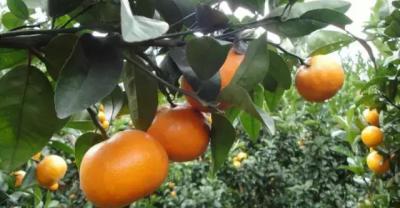
Planting Management of Rice growth period Water and Fertilizer demand
We usually divide a rice growth cycle into seedling stage, green stage, tillering stage, long panicle stage (panicle differentiation stage) and fruiting stage. The seedling stage is mostly in the seedling field.
- Next
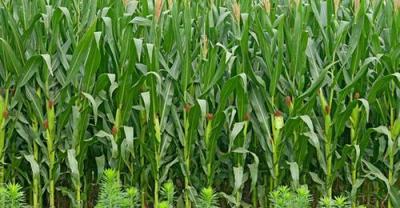
How to grow begonias and breeding tips
Begonia alias-August spring, Acacia grass, rock balls. Origin: Originally produced in China, in Shandong, Hebei, Henan, Jiangsu, Sichuan, Shaanxi Qinling...
Related
- Fuxing push coffee new agricultural production and marketing class: lack of small-scale processing plants
- Jujube rice field leisure farm deep ploughing Yilan for five years to create a space for organic food and play
- Nongyu Farm-A trial of organic papaya for brave women with advanced technology
- Four points for attention in the prevention and control of diseases and insect pests of edible fungi
- How to add nutrient solution to Edible Fungi
- Is there any good way to control edible fungus mites?
- Open Inoculation Technology of Edible Fungi
- Is there any clever way to use fertilizer for edible fungus in winter?
- What agents are used to kill the pathogens of edible fungi in the mushroom shed?
- Rapid drying of Edible Fungi

